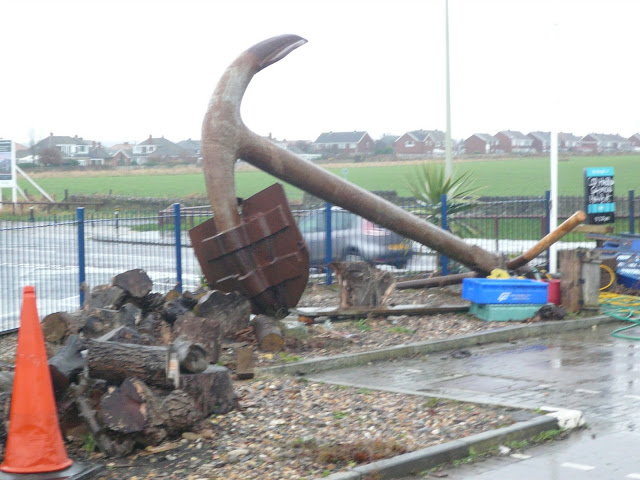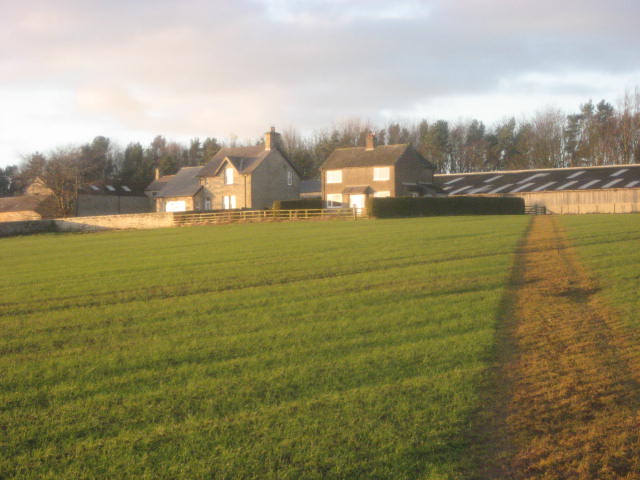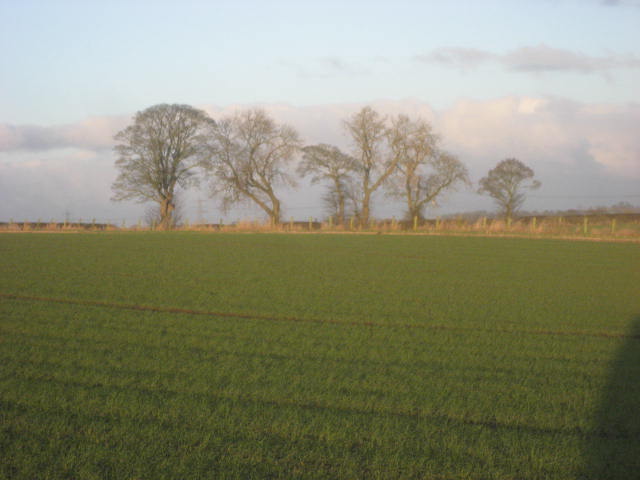Ferry across the Tyne (Two of us wearing raincoats)... December 29th
Should you be wondering why there was no walk reported last week it is because only two of us, Harry and I, yturned out. We walked down Jesmond Dene, through Ouseburn and along the Tyne quayside to the Quayside pub (for coffee) and then up through the streets of Newcastle and home. This pleasant walk through a park and reclaimed industrial area has been covered before, the last time being "Gese Muth" on October 14th 2016
Today, the two of us again, are walking from seaburn north of Sunderland, taking the ferry across the Tyne from South to North Shields and then walking on to Whitley Bay. No map needed really but it is covered, apart from the very first few hundred yards on OS Explorer 316, Newcastle upon Tyne.
We met at the metro station on the Haymarket, Newcastle and took the first train to Seaburn. It was, as promised by the weather girl on the local TV station, snowing, we were earing waterproofs.
An out of focus photo of Seaburn metro station instead of a car park.
From the station we walked down the street in an easterly direction until we hit the sea where we turned north and headed for South Shields.
Not far up the coast we came to Whitburn, in summer a lively little place but very quiet on a wintry day in December so we continued on our way.
Interesting plaque in Seaburn, one of the first in what became the RAF.
Wet Whitburn. The claim to fame of the hotel in the background is that Lowery stayed there to get away from the stick people of Manchester factories.
Contains OS data. Copyright. Crown copyright and data base right 2017
Should you be wondering why there was no walk reported last week it is because only two of us, Harry and I, yturned out. We walked down Jesmond Dene, through Ouseburn and along the Tyne quayside to the Quayside pub (for coffee) and then up through the streets of Newcastle and home. This pleasant walk through a park and reclaimed industrial area has been covered before, the last time being "Gese Muth" on October 14th 2016
Today, the two of us again, are walking from seaburn north of Sunderland, taking the ferry across the Tyne from South to North Shields and then walking on to Whitley Bay. No map needed really but it is covered, apart from the very first few hundred yards on OS Explorer 316, Newcastle upon Tyne.
We met at the metro station on the Haymarket, Newcastle and took the first train to Seaburn. It was, as promised by the weather girl on the local TV station, snowing, we were earing waterproofs.
An out of focus photo of Seaburn metro station instead of a car park.
From the station we walked down the street in an easterly direction until we hit the sea where we turned north and headed for South Shields.
Not far up the coast we came to Whitburn, in summer a lively little place but very quiet on a wintry day in December so we continued on our way.
Interesting plaque in Seaburn, one of the first in what became the RAF.
Wet Whitburn. The claim to fame of the hotel in the background is that Lowery stayed there to get away from the stick people of Manchester factories.
Further up the coast, which is a haven for seabirds but most seemed to have taken shelter today, apart from a kestrel we watched hovering near the edge of a cliff, we came to Souter Lighthouse, a national trust property.
Anchors away, near Whitburn
The Ring of Whitburn, an enchanted maze close to the sea.
Souter lighthouse, and foghorn.
Next pause was at Marsden Bay, famous for its grotto and lift
Entrance the famous Marsden Grotto, with snowflakes
Very soon we hit the outer limits of South Shields, sticking to the coastal path, passing the part of the town where the Great North half marathon is run. By now it had stopped snowing so we took off our waterproofs to enjoy what promised to be a scorcher by mid afternoon.
One of the delights of South Shields is Ocean Road, a continuous row of curry houses and restaurants, mostly serving Asian dishes but several offering that great British take away....
What did the Romans do for us? Arbeia was a supply fort for Hadrian's Wall, holding large grain supplies and many legionnaires. Well worth a visit, so is the fish and chip shop.
Near the market we stopped and had a bacon sandwich and tea. Harking back to the days when we awarded flitches for sandwiches, I gave this one five. Tasty bacon, fresh brown bun and brown sauce, lovely staff, great service and the tea was hot and strong.
Break over we walked down to the Ferry Terminal and crossed the river to North Shields. Many years ago, before the river was dredged, it was possible to walk across the river at low tide, hence the expression "All together like the folks of Shields"
Far too deep since the mid 19th century for such pleasures foot passengers now rely on the ferry although further upstream there is a pedestrian tunnel under the Tyne.
The Tyne to Ijmuden ferry (Holland) It takes about 16 hours to cross the North Sea.
From the ferry landing we walked along the river side, passing several tempting fish and chip shops with some difficulty.
This memorial to all fishermen lost at sea was erected earlier this year on the promenade that leads to Tynemouth. Made from metal, a beautiful piece of work.
Along the promenade we passed below the statue of Admiral Lord Collingwood, second in command at Trafalgar, first in command when Nelson died, pupil at Newcastle Royal Grammar School and sometime inhabitant of the hall at Hethpool near Wooler.
Collingwood, still looking out to sea.
Next monument along the way is the ruins of the Benedictine Abbey at Tynemouth, and next to it the ruins of one of several castles constructed on the orders of Edward I to keep the Scots at bay.
Abbey and Castle.
Continuing north we walked through the village of Cullercoats, famous for fishwives, and finally reached Whitley Bay, tired holiday resort trying hard to revive itself.
Here we parted company, Harry catching his bus home and me catching mine.
No pedometer readings today but my iPhone recorded a walk of about 13.3 miles. Not bad for a wintry day, no hills, not much wind, but most enjoyable.
This is the last walk of 2017 so thanks to all those readers who have looked at our blog and see you next year. Hope you all have a happy one.





















































